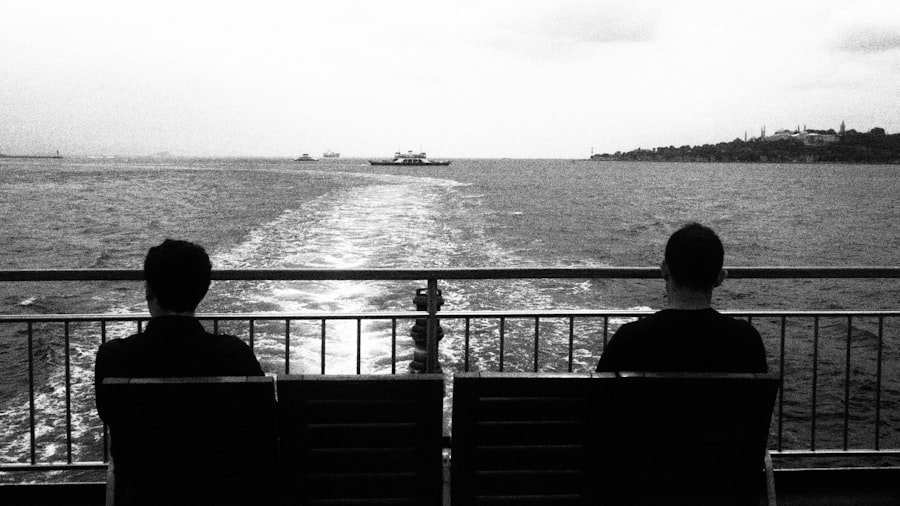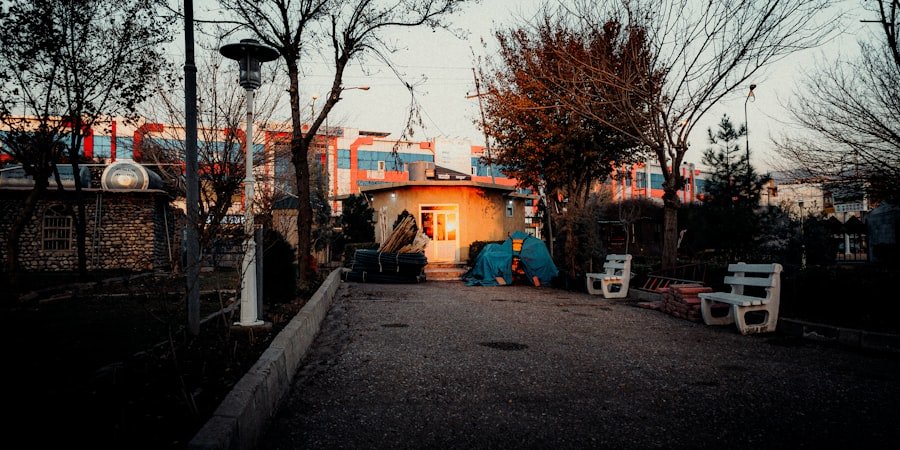The Golden Horn, known as Haliç in Turkish, is a natural harbor located in Istanbul, Turkey, that has played a pivotal role in the city’s history since ancient times. Its origins can be traced back to the early settlements of Byzantium, which was founded by Greek colonists from Megara around 657 BCE. The strategic location of the Golden Horn, with its deep waters and sheltered bay, made it an ideal site for maritime activities.
The harbor provided a safe haven for ships navigating the treacherous waters of the Bosporus Strait and the Sea of Marmara, facilitating trade and commerce in the region. Archaeological evidence suggests that the area surrounding the Golden Horn was inhabited long before the establishment of Byzantium. The presence of Neolithic artifacts indicates that human activity in this region dates back thousands of years.
As the city evolved, the Golden Horn became a focal point for trade routes connecting Europe and Asia. The Greeks recognized its potential and established a thriving port that would later attract Roman and Byzantine merchants. The natural geography of the harbor, flanked by hills and offering protection from storms, contributed to its significance as a maritime hub in antiquity.
Key Takeaways
- The Golden Horn is a natural harbor and estuary located in present-day Istanbul, Turkey, with a history dating back to ancient times.
- During Byzantine times, the Golden Horn played a crucial role in the city’s defense and trade, with the construction of the famous Theodosian Walls and the development of the harbor area.
- The Ottoman Empire further developed the Golden Horn, building important landmarks such as the Galata Bridge and the Topkapi Palace, and using it as a strategic location for trade and naval activities.
- In modern times, the Golden Horn has become a bustling hub for tourism, transportation, and cultural activities, with the construction of modern bridges and the development of waterfront promenades.
- The Golden Horn is home to famous landmarks such as the Galata Tower, the Golden Horn Metro Bridge, and the historic neighborhoods of Balat and Fener, which have inspired numerous literary and artistic works.
The Golden Horn in Byzantine Times
During the Byzantine era, the Golden Horn emerged as a vital artery for commerce and military strategy. The Byzantines fortified the harbor with impressive walls and towers, enhancing its defensive capabilities against potential invaders. The construction of the famous Theodosian Walls in the 5th century CE not only protected the city but also underscored the importance of the Golden Horn as a critical point of entry into Constantinople.
The harbor became a bustling center for trade, where goods from across the Mediterranean and beyond were exchanged. The Golden Horn also played a significant role in Byzantine naval power. The Byzantine fleet utilized the harbor for shipbuilding and repairs, ensuring that their naval forces remained formidable against external threats.
The harbor’s strategic position allowed for quick mobilization of troops and resources during conflicts, such as the wars against the Persians and later the Arab invasions. Additionally, the Golden Horn served as a cultural melting pot, where diverse communities coexisted and contributed to the rich tapestry of Byzantine society. Markets thrived along its shores, showcasing an array of goods, from spices to textiles, reflecting the cosmopolitan nature of Constantinople.
The Golden Horn during the Ottoman Empire

The Ottoman Empire’s ascendance in the 15th century marked a new chapter in the history of the Golden Horn. Following the conquest of Constantinople in 1453 by Sultan Mehmed II, the harbor continued to flourish as a vital commercial and military hub. The Ottomans recognized the strategic importance of the Golden Horn and invested heavily in its development.
They constructed new docks, warehouses, and shipyards to accommodate their expanding naval fleet, which played a crucial role in asserting Ottoman dominance over the Mediterranean. Under Ottoman rule, the Golden Horn became synonymous with wealth and prosperity. The bustling port attracted merchants from various regions, including Europe, Asia, and Africa, creating a vibrant marketplace that thrived on trade.
The harbor facilitated not only maritime commerce but also cultural exchanges, as diverse communities settled along its shores. The Ottomans established numerous public works projects, including bridges and roads that connected different parts of Istanbul to the Golden Horn, further enhancing its accessibility and significance.
The Golden Horn in Modern Times
| Aspect | Metrics |
|---|---|
| Length | 7.5 kilometers |
| Width | 200 meters |
| Depth | 25 meters |
| Location | Istanbul, Turkey |
| Significance | Historical and cultural importance, popular tourist attraction |
In modern times, the Golden Horn has undergone significant transformations while retaining its historical importance. The 20th century brought industrialization to Istanbul, leading to changes in the landscape surrounding the harbor. Factories and warehouses sprang up along its banks, altering its character from a primarily maritime hub to an industrial zone.
However, this shift also posed environmental challenges, as pollution began to affect water quality and marine life in the Golden Horn. Despite these challenges, efforts have been made to revitalize the area and restore its historical significance. Urban renewal projects have aimed to clean up the waters of the Golden Horn and create public spaces along its shores.
Parks, promenades, and recreational areas have been developed to encourage residents and tourists alike to engage with this historic waterway. The restoration of historic buildings and landmarks has also contributed to a renewed interest in the cultural heritage of the Golden Horn, making it a focal point for both locals and visitors.
Famous Landmarks along the Golden Horn
The shores of the Golden Horn are lined with numerous landmarks that reflect Istanbul’s rich history and cultural heritage. One of the most iconic structures is the Galata Bridge, which connects the districts of Karaköy and Eminönü. This bridge has been a vital crossing point for centuries, serving as a gathering place for fishermen and offering stunning views of both the harbor and Istanbul’s skyline.
Its current iteration features a two-level design with restaurants and cafes on the upper deck, making it a popular spot for locals and tourists alike. Another significant landmark is the Eyüp Sultan Mosque, located near the northern end of the Golden Horn. This mosque is one of Istanbul’s most important religious sites and is dedicated to Abu Ayyub al-Ansari, a companion of Prophet Muhammad who is believed to be buried there.
The mosque complex includes beautiful gardens and a cemetery that holds many notable figures from Ottoman history. Its proximity to the Golden Horn adds to its allure, as visitors can enjoy serene views of the water while exploring this sacred site.
The Golden Horn in Literature and Art

The Golden Horn has inspired countless artists, writers, and poets throughout history, serving as a muse for creative expression across various mediums. In literature, it has been depicted as a symbol of beauty and nostalgia, often representing Istanbul’s unique blend of cultures and histories. Renowned authors such as Orhan Pamuk have drawn upon the imagery of the Golden Horn in their works to evoke feelings of longing and connection to place.
In visual arts, painters like Ivan Aivazovsky captured the ethereal beauty of the Golden Horn in their landscapes. Aivazovsky’s seascapes often featured dramatic skies reflecting on the water’s surface, showcasing not only his mastery of light but also his deep appreciation for Istanbul’s maritime heritage. The harbor has also been portrayed in various forms of contemporary art, where artists explore themes related to urbanization, identity, and environmental concerns through installations and exhibitions that engage with this historic waterway.
Environmental Concerns and Preservation Efforts
As urbanization continues to impact Istanbul’s landscape, environmental concerns regarding the Golden Horn have become increasingly pressing. Industrial pollution from factories along its banks has led to significant degradation of water quality over time. Efforts to address these issues have gained momentum in recent years as awareness grows about the importance of preserving this vital ecosystem.
Various initiatives have been launched to clean up the waters of the Golden Horn and restore its natural habitat. Local government agencies have implemented waste management programs aimed at reducing pollution from industrial sources while promoting sustainable practices among businesses operating near the harbor. Community engagement has also played a crucial role in these efforts; local residents have organized clean-up campaigns to remove debris from the shores and raise awareness about environmental stewardship.
The Golden Horn’s Influence on Istanbul’s Culture and Economy
The Golden Horn remains an integral part of Istanbul’s cultural identity and economic vitality. Its historical significance as a trade route continues to resonate today; bustling markets along its banks reflect centuries-old traditions of commerce that have shaped local livelihoods. Fishermen still cast their nets into its waters while vendors sell fresh seafood at nearby stalls, preserving culinary practices that have been passed down through generations.
Culturally, the Golden Horn serves as a backdrop for various festivals and events that celebrate Istanbul’s rich heritage. From traditional music performances to art exhibitions held along its shores, these activities foster community engagement while attracting tourists eager to experience Istanbul’s vibrant culture firsthand. As urban development continues to evolve around this historic waterway, it remains essential for policymakers to balance modernization with preservation efforts that honor both its past and future significance within Istanbul’s ever-changing landscape.
If you are interested in exploring the history of Golden Horn, you may also enjoy reading about the delicious homemade cottage cheese recipe on Tagline Today. This simple and healthy recipe can transport you back in time to when this nutritious food was a staple in many cultures.
FAQs
What is the Golden Horn?
The Golden Horn is a historic inlet and natural harbor in Istanbul, Turkey. It is formed by the confluence of the Bosphorus and the Sea of Marmara.
What is the significance of the Golden Horn in history?
The Golden Horn has played a significant role in the history of Istanbul, serving as a major commercial and residential hub for centuries. It has been a vital waterway for trade and transportation, and has been a strategic location for various civilizations and empires.
What historical events have taken place around the Golden Horn?
The Golden Horn has witnessed numerous historical events, including the founding of Byzantium (the predecessor of Constantinople and Istanbul), the conquest of Constantinople by the Ottoman Empire, and various naval battles and sieges throughout history.
What are some notable landmarks around the Golden Horn?
Some notable landmarks around the Golden Horn include the Galata Tower, the historic neighborhoods of Balat and Fener, the Byzantine city walls, and the famous Golden Horn Bridge.
How has the Golden Horn changed over time?
The Golden Horn has undergone significant changes over the centuries, including the construction of bridges, the development of waterfront areas, and the expansion of the city of Istanbul. It has also experienced environmental and urbanization challenges.

